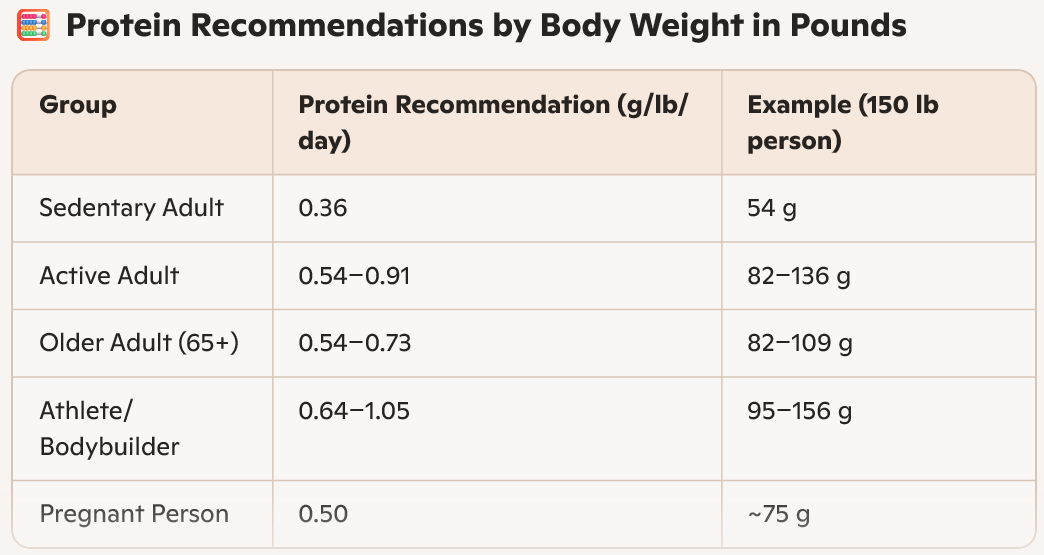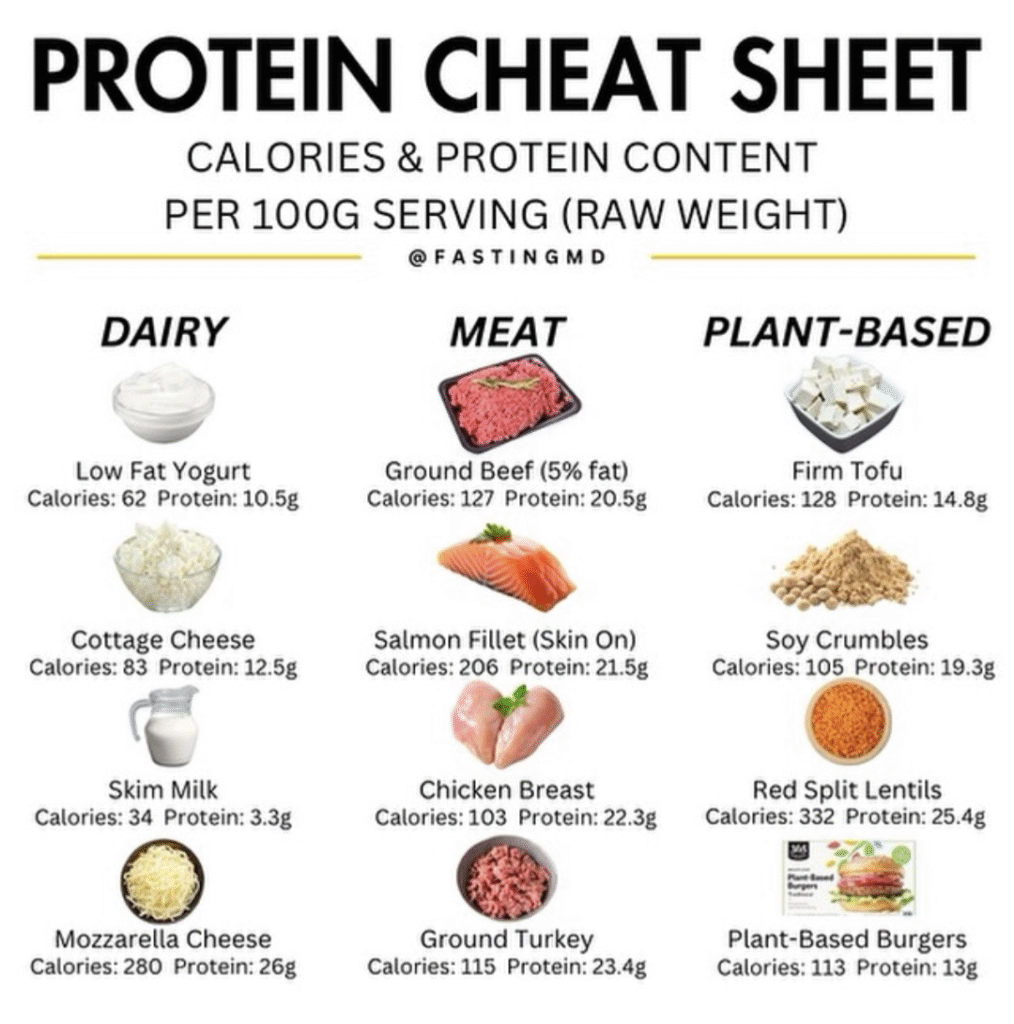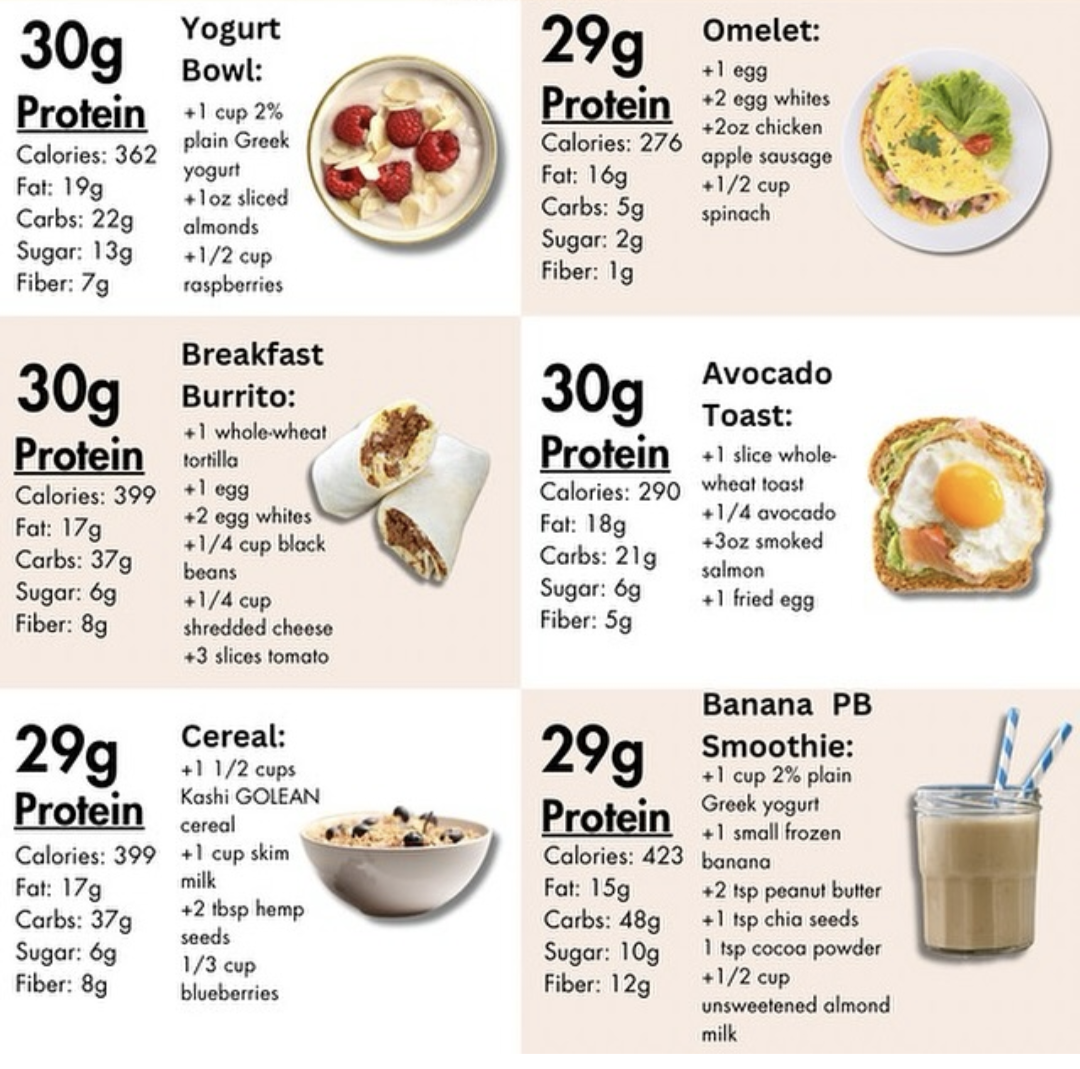Do I Really Need Protein?
Protein is often the most misunderstood macronutrient. It’s not just for athletes or gym-goers; it’s essential for everyone. From repairing tissues and building enzymes to supporting immune function and preserving muscle mass, protein plays a starring role in your health.
Many people don’t get enough, especially as they age or increase physical activity. Trust me, I know! I struggle to meet my daily protein goal. It’s important to pay attention to the amount of protein in the foods you eat.
As long as you’re consuming around 0.7 grams per pound per day, you should be okay. If you’re training hard five or six days a week, they you may mneed to increase your protein intake to 1 gram per pound per day. I know, that can be difficult. Protein supplements & shakes can help you meet your protein macros goals.
Whey protein is the most anabolic because it contains a high percentage of leucine. Unfortunately, many people don’t digest whey well. If that’s the case, you can take a leucine supplement with your protein as an effective hack. For plant-based diets, pea protein has almost the same percentage of leucine as whey.
The Recommended Daily Allowance
There are several schools of thought when it comes to the Recommended Dietary Allowance (RDA) for protein, and they vary based on scientific interpretation, lifestyle factors, and evolving research. Here’s a breakdown of the major perspectives:
🧠 1. Traditional RDA Model (0.8 g/kg/day)
Source: Food and Nutrition Board, National Academies of Sciences
- Purpose: Prevent deficiency in 97–98% of healthy adults
- Critique: Considered by many experts to be the minimum required for basic physiological function—not optimal for muscle maintenance, aging, or active lifestyles
- Example: A 150 lb (68 kg) person would need ~54 g/day
🏋️ 2. Sports & Performance Nutrition Model (1.2–2.2 g/kg/day)
Source: Sports dietitians, exercise physiologists
- Purpose: Support muscle repair, hypertrophy, and recovery
- Target Audience: Athletes, bodybuilders, and highly active individuals
- Example: A 150 lb person might need 82–150 g/day
- Notable Voices: Angie Asche, MS, RD, CSSD; Melissa Mitri, MS, RD
- Caution: Excessive intake (e.g., >2.2 g/kg) may not offer additional benefits and could strain kidneys in vulnerable populations
👵 3. Aging & Longevity Model (1.2–1.6 g/kg/day)
Source: Geriatric nutrition researchers
- Purpose: Prevent sarcopenia, maintain independence, and support metabolic health
- Target Audience: Adults 65+
- Example: A 150 lb older adult might need 82–109 g/day
- Supporting Research: Higher protein intake improves muscle retention and reduces frailty in aging populations
🤰 4. Life Stage & Clinical Needs Model
Source: Clinical dietitians, prenatal and chronic illness specialists
- Purpose: Adjust protein for pregnancy, illness, recovery, or metabolic conditions
- Examples:
- Pregnancy: ~1.1 g/kg/day
- Chronic illness or post-surgery: Up to 1.5–2.0 g/kg/day
- Note: Needs vary widely depending on diagnosis and treatment goals
📱 5. Social Media & Influencer Model (2.0–2.2 g/kg/day or 1 g/lb)
Source: Fitness influencers, biohackers, and wellness personalities
- Claim: Higher protein intake leads to better body composition, satiety, and metabolic health
- Critique: Often lacks scientific nuance; may promote excessive intake without context
- Example: Jessie Inchauspé (Glucose Goddess) suggests 2 g/kg/day to “thrive”—a claim not universally supported by research
- Risk: Oversimplification and misinformation for general populations
🧪 6. Personalized Nutrition & Precision Health Model
Source: Emerging research in nutrigenomics and personalized medicine
- Purpose: Tailor protein intake based on genetics, microbiome, activity, and goals
- Tools: AI-driven apps, wearables, and lab testing
- Future Outlook: May redefine protein needs beyond one-size-fits-all formulas
Okay, But Really, How Much Protein Do I Need?
To answer the question, as a rule of thumb, shoot for 0.5 to 1 grams per pound of body weight. If your goal is to maintain your weight, move toward 0.5 grams. If your goal is to gain lean muscle and weight, move toward 1 gram per pount. You’ll need to increas your protein intake if your training volume increases past a certain threshold. Think bodybuilder, Ironman, or competitive athlete.
Here’s a breakdown of protein needs by group: Sedentary vs. Active Needs

Use the Protein Calculator below to get an idea of how much protein you should consume in a day.
Protein Calculator

Protein-Rich Foods
Here are examples of foods with ~7 grams of protein:
-
1 oz lean meat, poultry, or fish
-
1 egg
-
2 oz cooked beans or tofu
-
1 tbsp nut butter
-
4 oz nuts or seeds
1/2 cup of chickpeas
2 tbsp of peanut butter
100g of tofu
100g of edamame
1 oz cheddar cheese
Whole foods are ideal, but protein powders and fortified snacks can help fill gaps when needed.
Protein Matters More as We Age
As we age, we naturally lose muscle mass, a condition known as sarcopenia. This can lead to frailty, slower metabolism, and reduced mobility. To counteract this, older adults should aim for .54-.73 g/lb/day. Higher protein intake helps preserve strength, independence, and overall vitality. Spacing protein throughout the day in increments of 20 to 40 grams per meal can also improve absorption and muscle synthesis.
Common Surprises
If you track your protein intake, even for a week, you’d be surprised at what you find. For example:
“Healthy” granola bars often contain more sugar than protein
Smoothies can rival burgers in calorie content
Sodium levels in packaged “clean” meals can be sky-high
Plant-based diets may fall short on complete proteins without careful planning
Final Bite
Protein isn’t just a nutrient, it’s a very important strategy. Whether you’re aging, training, recovering, or simply trying to feel better, protein is your ally. With today’s apps and calculators, it’s easier than ever to decode your plate and empower your choices. I use Foodvisor, but there are many apps you can use to track your macros.
So when you wake up tomorrow, put some thought into your meal planning. Breakfast is an important meal and one you should try to eat within two hours of waking up. Start the day with approximately 20-30 grams of protein, and the rest of your day should follow suit. Your body will thank you.
Be Well,
Edrika

